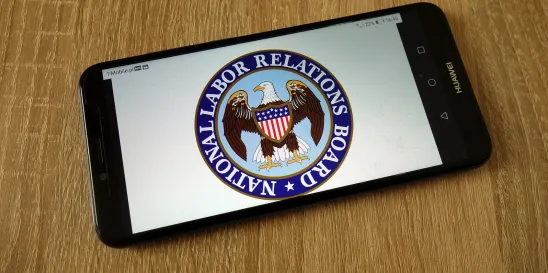On the eve of its going into effect, a federal court struck down the expansive joint-employment standard announced by the National Labor Relations Board (“NLRB” or “Board”) last fall. At issue is who may be considered a “joint employer” under the National Labor Relations Act (“NLRA” or “Act”). Under the final rule published October 27, 2023 (“2023 Rule”), the Board is required to consider both direct evidence of control as well as evidence of reserved and indirect control (even if unexercised) in considering whether two or more companies are considered “joint employers” of particular employees. The 2023 Rule rescinded an earlier NLRB rule from 2020 limiting joint employment to situations involving “substantial direct and immediate control” by two companies over employees’ essential terms and conditions of employment.
On Friday, March 8, 2024, the U.S. District Court for the Eastern District of Texas vacated the NLRB’s 2023 Rule just days before it was set to go into effect on March 11, 2024, finding its rescission of the prior rule and implementation of a new, expansive standard was arbitrary and capricious. The decision restores the 2020 rule.
A Decade-Long Fight
Friday night’s decision is the latest in a decade-long back-and-forth struggle over the NLRB’s joint-employer standard. Under the NLRA, two or more separate business entities are joint employers of a single workforce if “they share or co-determine those matters governing the essential terms and conditions of employment.” If two entities are joint employers under the Act’s joint-employer standard, both must collectively bargain with the union that represents the jointly employed employees, both are potentially liable for unfair labor practices committed by the other, and both are subject to union picketing or other economic pressure if there is a labor dispute.
While the NLRB has long recognized the concept of joint employment in determining liability, the standard for determining joint-employer status has repeatedly changed over the last decade. From 1984 until 2015, the NLRB focused on whether a putative joint employer actually exercised “direct and immediate control” over the essential terms and conditions of the relevant worker’s employment, such as hiring, firing, discipline, supervision, and direction. Although a fact-specific inquiry, this standard was widely seen as creating a fairly predictable legal regime for most businesses.
In August 2015, the NLRB upended over thirty years of established precedent to “restate” the joint-employer standard under the NLRA. In a 3-2 decision in Browning-Ferris Industries of California, Inc., 362 NLRB No. 186, 2015 WL 5047768 (Aug. 27, 2015), the Board overturned the traditional “direct and immediate control” standard in favor of a vague, expansive standard under which indirect control through an intermediary or the reserved right to control, even if unexercised, may be sufficient to find a joint-employer relationship.
The NLRB reversed course in 2020. In April 2020, the Trump-era NLRB issued final rule (“2020 Rule”) overturning the Browning-Ferris standard and restoring the traditional standard under which an entity can be considered a joint employer of another entity’s employees only if it exercises actual “substantial direct and immediate control” over the employees’ essential terms and conditions of employment (defined as only “wages, benefits, hours of work, hiring, discharge, discipline, supervision, and direction”) in a manner that is not sporadic and isolated. Under the 2020 Rule, indirect control or the reserved but unexercised right to control was not sufficient to establish a joint-employer relationship.
With the 2023 Rule, the NLRB has reversed course yet again. The 2023 Rule rescinded the 2020 rule and re-imposed the expansive Browning-Ferris standard for determining joint employment, making it easier for an entity to be deemed a joint employer. Indeed, the final rule went further than Browning-Ferris by establishing that indirect or reserved control alone is sufficient to establish joint employment.
Under the 2023 Rule, “an employer is a joint employer of particular employees if the employer has an employment relationship with those employees under established common-law agency principles and the employer shares or codetermines those matters governing at least one of the employees’ essential terms and conditions of employment,” meaning that the employer has the authority to control (indirectly and/or directly) the employee’s essential employment terms and conditions. The “essential terms and conditions of employment” are: wages, benefits, and other compensation; hours of work and scheduling; assignment of duties to be performed; supervision of the performance of duties; work rules and directions governing the manner, means, or methods of work performance of duties; tenure of employment, including hiring and discharge; and working conditions related to the safety and health of employees.
Critically, under the 2023 Rule, the relevant control over employees is no longer limited to actual direct control of essential terms and conditions of employment. The broader standard would also consider evidence of reserved authority to control and/or indirect control. Reserved, unexercised right to control essential terms and conditions of employment could be deemed sufficient to render an employer a joint employer for labor relations purposes.
Legal Challenges
Shortly after the NLRB’s 2023 Rule was published, the U.S. Chamber of Commerce, International Franchise Association, and other industry groups filed suit in the U.S. District Court for the Eastern District of Texas, seeking to enjoin and declare unlawful the 2023 Rule. The plaintiffs argued the 2023 Rule’s expansive standard and rescission of the 2020 Rule were arbitrary and capricious. On March 8, 2024, the federal court agreed, striking down the 2023 Rule and restoring the 2020 Rule. The NLRB is expected to promptly appeal.
Meanwhile, a separate legal challenge to the 2023 Rule is currently pending in the D.C. Circuit Court of Appeals. This separate lawsuit by the Service Employees International Union (“SEIU”) broadly supports the 2023 Rule but argues it did not go far enough. The D.C. Circuit has not yet ruled. The existence of this separate lawsuit in a different court could lead to a contrary result and circuit split, increasing the need for and likelihood of Supreme Court review.
In addition, in November 2023, members of Congress introduced a joint resolution of disapproval (H.J.Res. 98) under the Congressional Review Act to nullify the 2023 Rule. The CRA passed the House of Representatives in a bipartisan vote in January 2024. The Senate is expected to take up the matter this month. Enactment of H.J.Res. 98 would tie the hands of future NLRBs from instituting an expansive joint-employment standard.
Best Practices for Franchisors
Franchisors and other companies can breathe a sigh of relief following Friday’s decision, but it does not eliminate joint employment as an ongoing issue. Even if the legal and legislative challenges to the NLRB’s 2023 Rule ultimately prevail, joint-employment concerns will remain. Companies with franchise and other license-based relationships, for example, have been potential targets of joint-employment claims for years. Both franchisors and franchisees bear significant risks that the standard franchise model may be challenged as creating joint employment of franchisees’ employees due to the control franchisors and licensors must exert (both contractually and in practice) under the Lanham Act to maintain rights as trademark owners.
Franchisors should review their current franchise agreements, training and operations manuals, and actual practices to eliminate control over the hiring, firing, discipline, compensation, and related aspects of the franchisee’s employment of its employees. Best practices for franchisors include the following:
- Clear Documentation Disclaiming Authority to Control Franchisee’s Employees: Franchisors should review their franchise agreements and other documentation for evidence of actual or reserved control regarding a franchisee’s employees. Franchise agreements and other documentation, including manuals and handbooks, should make clear that franchisees are solely responsible for all employment and personnel matters, including the hiring, firing, supervising, disciplining, scheduling, compensating, and managing of their own employees. Franchisors should expressly disavow in writing any right to control these employment matters. Whenever possible, language regarding a franchisee’s personnel matters or policies should be phrased as optional recommendations, which the franchisee alone may decide whether and how to implement. To the extent limited requirements are necessary, such requirements should be described in the context of maintaining objective operational brand standards such as having ethical and courteous employees trained to provide a certain level of service and accommodate customer needs.
- Avoid Actual Control Over Franchisee’s Employees: Franchisors should, in practice, implement only those controls necessary to protect the goodwill of the brand. Notwithstanding the shifting joint-employer standards, it is critical for franchisors to be able to implement controls over trademark, advertising, quality control, and unit appearance issues. This should include enforcement of operational requirements aimed at brand standards, including regarding sufficient staffing levels to meet customer needs and having courteous, trained employees. On the other hand, franchisors should avoid actual direct or indirect control over the franchisee’s employment and personnel policies or actions, including the hiring, firing, disciplining, and scheduling of the franchisee’s employees.
- Limit Contact with Franchisee’s Non-Management Employees: Franchisors should limit interactions with a franchisee’s non-management employees. When conducting inspections and site visits, the franchisor’s personnel should review operations only with the franchisee or its manager. The franchisor’s personnel should give directions or suggestions directly to the franchisee’s owner or manager and not to its employees. Because indirect control may trigger joint-employment status, any such directions or suggestions should be focused on enforcing standards necessary to protect the goodwill of the brand, not the franchisee’s employment or personnel matters. Similarly, to the extent practical, training programs should be limited to a franchisee’s managerial and supervisory employees, who may then independently train the franchisee’s staff.
- Avoid Administrative Functions for Franchisee’s Employees: The franchisee—not the franchisor—should perform all administrative functions regarding the franchisee’s employees, including handling payroll, providing workers’ compensation insurance, and providing the tools, materials, or safety equipment required for employees’ work.
- Announce Independent Relationship: Franchisors should take steps to ensure that the franchisee’s employees and the general public know they are employed by the independent franchisee and not by the franchisor. For example, franchisors should require franchisees to place conspicuous signage stating that the unit is independently owned and operated. In addition, franchisors should prohibit franchisees from using the franchisor’s name, logos, or marks in the franchisee’s corporate name or employment-related documents, such as applications, employment agreements, evaluations, paychecks, etc. Similarly, a franchisee’s employment application should clearly state that the applicant is applying to work for the franchisee, not the franchisor. If a franchisee imposes a personnel handbook on its employees, then the franchisor should request that the handbook expressly state that the worker is an employee of the franchisee—not the franchisor—and that the franchisor does not possess the right to control the employee’s performance of duties, scheduling, or other conditions of employment.
The ever-changing joint-employment standard reinforces the need for franchisors to consult with qualified counsel.




 />i
/>i

